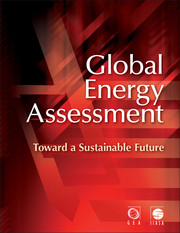Book contents
Chapter 1 - Energy Primer
Published online by Cambridge University Press: 05 September 2012
Summary
Introduction and Roadmap
Life is but a continuous process of energy conversion and transformation. The accomplishments of civilization have largely been achieved through the increasingly efficient and extensive harnessing of various forms of energy to extend human capabilities and ingenuity. Energy is similarly indispensable for continued human development and economic growth. Providing adequate, affordable energy is a necessary (even if by itself insufficient) prerequisite for eradicating poverty, improving human welfare, and raising living standards worldwide. Without economic growth, it will also be difficult to address social and environmental challenges, especially those associated with poverty. Without continued institutional, social, and technological innovation, it will be impossible to address planetary challenges such as climate change. Energy extraction, conversion, and use always generate undesirable by-products and emissions – at a minimum in the form of dissipated heat. Energy cannot be created or destroyed – it can only be converted from one form to another, along a one-way street from higher to lower grades (qualities) of energy. Although it is common to discuss energy “consumption,” energy is actually transformed rather than consumed.
This Energy Primer 1 aims at a basic-level introduction to fundamental concepts and data that help to understand energy systems holistically and to provide a common conceptual and terminological framework before examining in greater detail the various aspects of energy systems from challenges and options to integrated solutions, as done in the different chapters of the Global Energy Assessment (GEA).
- Type
- Chapter
- Information
- Global Energy AssessmentToward a Sustainable Future, pp. 99 - 150Publisher: Cambridge University PressPrint publication year: 2012
References
- 26
- Cited by



